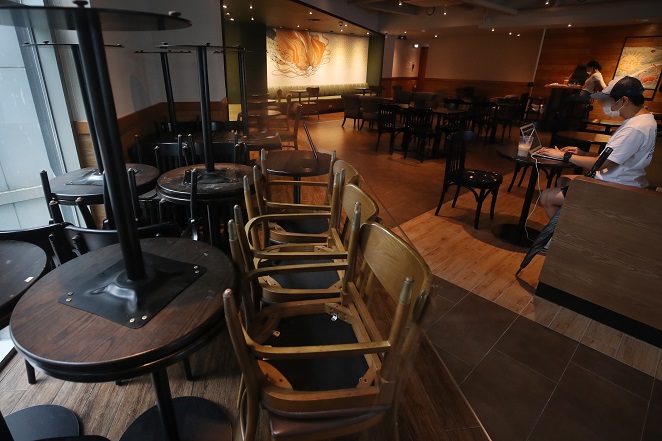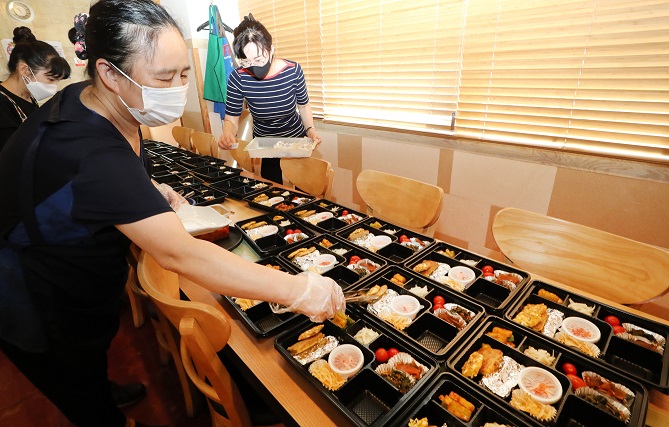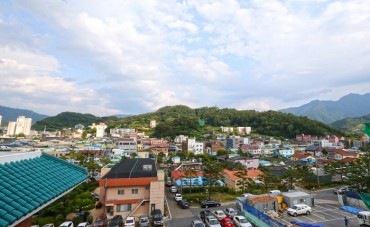
Tables and chairs are moved to a corner of a large cafe in downtown Seoul in preparation for the government’s heightened social distancing rules that go into effect on Aug. 30, 2020. (Yonhap)
SEOUL, March 19 (Korea Bizwire) — Seoul Ciry’s alleys have faced mixed fortunes in the era of COVID-19 pandemic.
In collaboration with the Seoul Credit Guarantee Foundation, the Seoul Metropolitan Government analyzed the data on the use of Shinhan Card Co.’s credit cards in the city’s 1,009 commercial alleys for the period from October 2019 to December 2020.
The analysis showed that total sales in the commercial alleys fell by 19.6 percent compared to the pre-COVID-19 period, with per-store sales declining by 13.8 percent during the period.
Among the commercial alleys, 592 or 58.7 percent of the total suffered a decline in sales, while 417 saw their sales remain unchanged or increase.
Most of the commercial alleys that reported unchanged or higher sales are located in the residential areas on the outskirts of the city, or areas that are adjacent to the living spheres.
Among the businesses located in such commercial alleys, retail businesses selling used furniture, lighting fixtures or food supplies accounted for the largest share at 41.5 percent.

A worker at a restaurant in central Seoul makes boxed lunches to be delivered on Aug. 31, 2020. (Yonhap)
In contrast, many of the commercial alleys that reported a sharp decline in sales are located in denser urban areas or adjacent to these areas. Restaurants accounted for the largest share at 65.3 percent among the businesses located in such areas.
Among 10 types of restaurant businesses in the commercial alleys with unchanged or higher sales, fried chicken restaurants, bakeries and fast-food restaurants accounted for the largest share, all of which sell items suitable for packaging and delivery.
In the commercial alleys that recorded a plunge in sales, foreign food restaurants including those selling Chinese and Japanese food had a larger share.
The city government explained that the commercial alleys in urban areas that are visited by many domestic and foreign tourists, as well as those in business-centered districts where many workers enjoyed eating out, have been hit particularly hard by the pandemic.
J. S. Shin (js_shin@koreabizwire.com)






